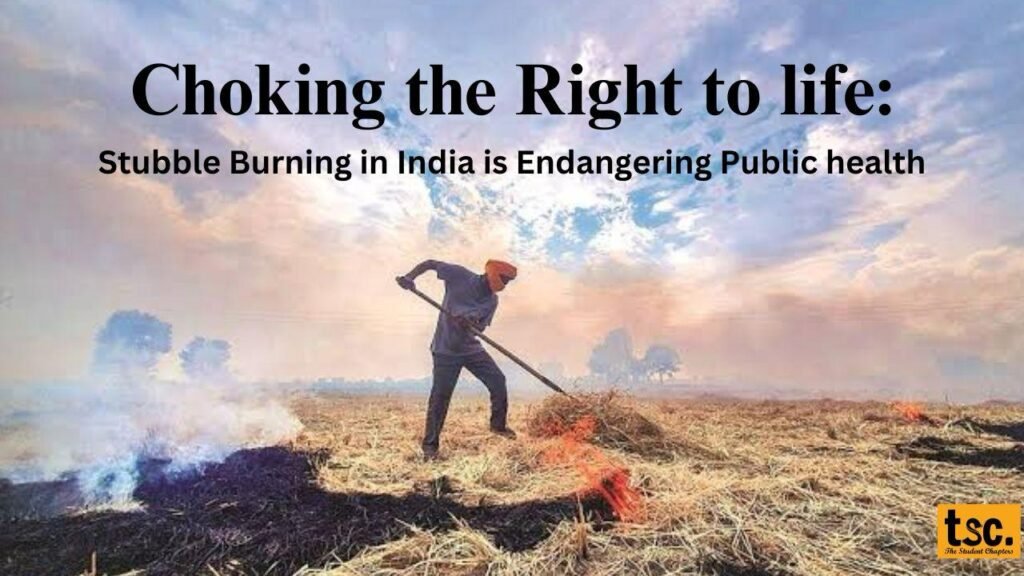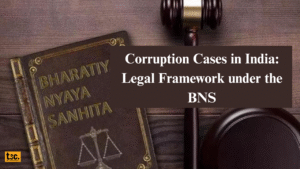Choking the Right to Life: Stubble Burning in India is Endangering Public Health

Choking the Right to Life by Stubble Burning in India which is Endangering Public Health. Stubble burning in India is infringing the “right to life,” as guaranteed under Article 21 of the Indian Constitution, due to the severe environmental and public health consequences it causes. Here’s how:
1. Air Pollution and Health Hazards
Stubble burning releases large amounts of pollutants into the air, including particulate matter (PM2.5 and PM10), carbon monoxide (CO), nitrogen oxides (NOx), and other toxic gases. These pollutants lead to:
– Respiratory Problems: People, especially in Northern India, experience increased cases of asthma, bronchitis, and other respiratory disorders.
– Heart Conditions: Air pollution is linked to cardiovascular diseases, and high levels of pollutants from stubble burning exacerbate heart-related issues.
– Premature Deaths: Prolonged exposure to polluted air, especially fine particulate matter like PM2.5, is associated with premature deaths. The right to life is directly threatened when people die early due to poor air quality.
2. Environmental Degradation
Stubble burning releases greenhouse gases like carbon dioxide (CO2) and methane (CH4), contributing to global warming and climate change. Additionally, it depletes soil nutrients and reduces soil fertility, impacting the sustainability of agriculture and overall environmental quality. The deterioration of the environment indirectly undermines people’s health and well-being, which are part of their right to life.
3. Impact on Vulnerable Populations
Certain groups, such as children, the elderly, and people with pre-existing health conditions, are more vulnerable to the effects of air pollution. These populations face a particularly severe infringement on their right to life, as polluted air compromises their ability to breathe cleanly.
4. Violation of the Right to a Healthy Environment
The Supreme Court of India has interpreted the right to life under Article 21 to include the right to a healthy environment. By significantly worsening air quality, stubble burning violates this extended understanding of the right to life, making it a violation of constitutional rights.
5. Legal and Judicial Interventions
The Supreme Court, the National Green Tribunal (NGT), and other courts have intervened multiple times, recognizing that stubble burning is a major contributor to air pollution and hence infringes upon the right to life. They have mandated several measures to curb the practice, acknowledging the gravity of the situation.
Despite the legal frameworks in place, the persistence of stubble burning due to socio-economic challenges—such as farmers’ lack of access to alternative stubble management techniques—continues to cause large-scale pollution. The conflict between the livelihood of farmers and public health makes it a complex issue. But the infringement on the right to life is evident when the air becomes too toxic for safe breathing.
Conclusion
In summary, stubble burning infringes on the right to life in India by contributing significantly to air pollution. This endangers public health and the environment. This compromises the fundamental right to live in a safe and healthy environment, prompting judicial interventions and highlighting the need for stronger enforcement of pollution control measures. Thus, choking the right to life by stubble burning in India which is Endangering Public Health.
Stay tuned on our website as if any official information pops up then we will update you in minutes! If you want all the latest updates on time then join our student community on WhatsApp!
Choose the right career yourself by booking personal guidance from professionals on Mytagapp.com!









